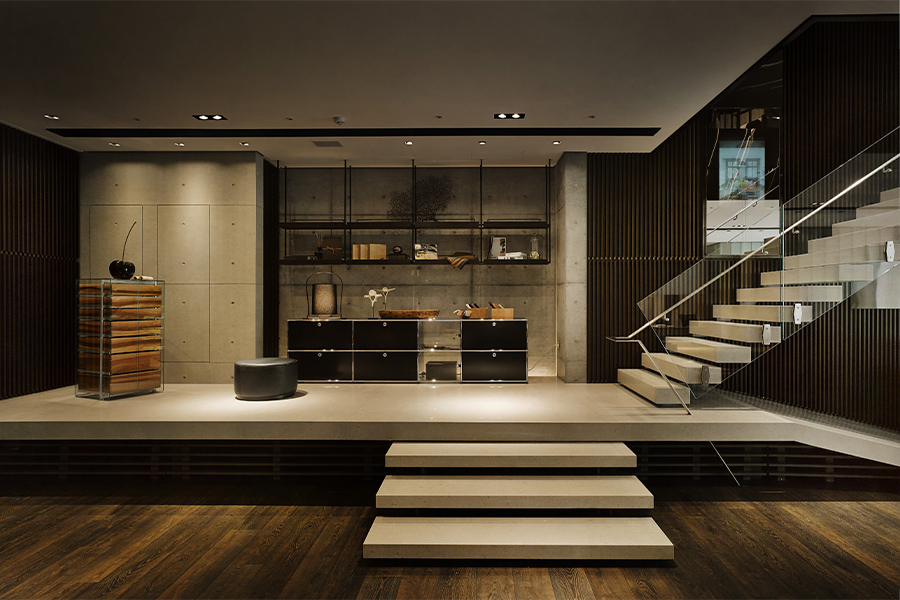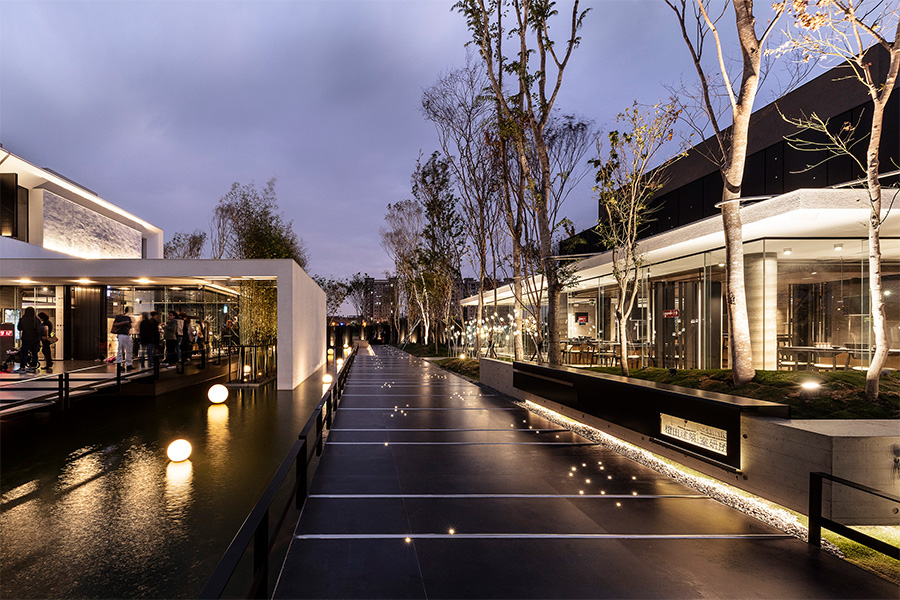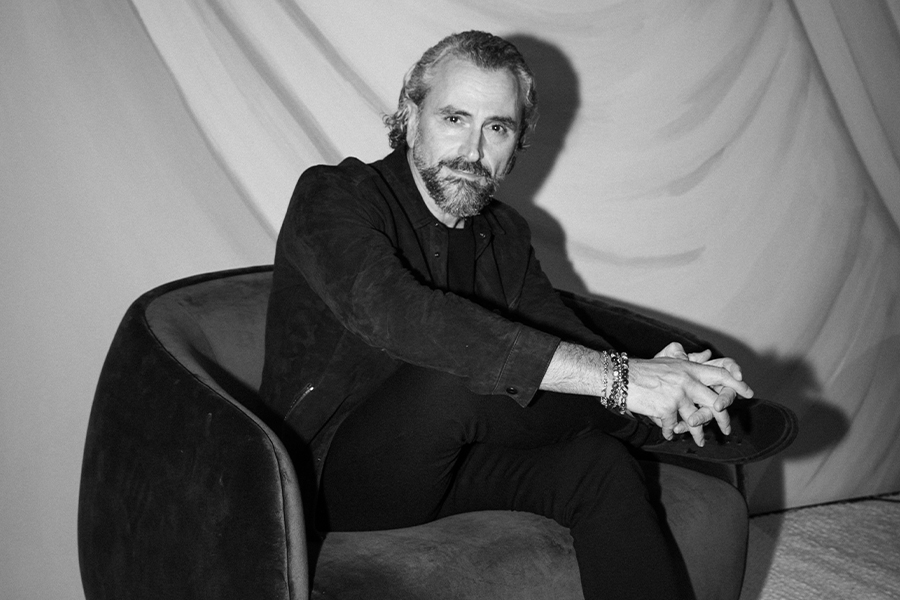With an emphasis on wellbeing, sustainability, and balance, the Taiwan-based Chain10 Architecture & Interior is known for its thought-provoking work that spans retail, offices, restaurants, and more. Founded by Keng-Fu Lo in 1996, the firm is committed to combatting climate change with sustainably minded designs that create harmonious experiences. Here, Lo describes his nature-focused work, his architecture idol, and why a sense of belonging drives his creations.
Where did you grow up? Did it influence your career path?
I was born in Tainan, a city located in the southern region of Taiwan. After a few years, we moved to another city about an hour away, which was a bit difficult, as the Taiwanese economy was transitioning from agriculture to the light industry, producing hardship for a number of families. At this time, while my studies in school were quite general, I developed an affinity for art. I won a wide variety of art competitions, which acted as a catalyst for my design pursuits.
What truly marks my style is my purpose, and that stems from my environment. I grew up in a different time in Taiwan’s history, where nature was a major part of everyday life. Half a century ago, the weather in my home country was notably stable. The seasons were predictable, as was the rainfall. However, similar to many places around the world, weather patterns have become extremely erratic. Looking from the time that I was a child to now, climate change has made such an immense impact on the land and has been a driving factor in my designs.
What is your first design memory?
I was working on an interior design project and I had the task of decorating the women’s area of a clothing showroom, which was actually a part-time gig. An entrepreneur provided me with the opportunity, and I took it. As one of my first interior design assignments, I was able to grasp the importance of the discipline. Design has the capability to positively or negatively impact our wellbeing. This project pushed me to pay particular attention to space, and the way we furnish and enhance it.

The Raytext Fine Furnishings showroom
Give us a bit of your background: college, first jobs, early lessons learned.
I did not intend to work in architecture. Following my graduation from university, I [decided] to further my education—though I was unsure about what field I wanted to explore. I ended up attending the Kaohsiung Medical School, and studied in the clinical psychology department. It was essential that I found ways to support myself during breaks in the school year. I came across a part-time job in graphic design, which led me to designing a commercial space. This opportunity inspired me to further cultivate my knowledge and passion for design, and pushed me to explore more of the architectural realm.
What led you to launch Chain10 Architecture & Interior?
Taking heed of the changes in my surroundings—environmentally and socially—I noticed a need that had to be nurtured. I believed that my enthusiasm for design and knowledge of psychology could merge into something that would leave a positive impact for our land, and ourselves. We do not build solely for the sake of building. Our commitment to nature and community is deeply rooted in Chain10’s philosophy, showcased through the development of climate-focused, energy-saving buildings that integrate internal and external spaces.
Tell us about the most memorable project you’ve worked on. What made it so special?
It would have to be the Green Places Community Clubhouse. As a shared space for the residents of the Tainan community, the clubhouse provides areas for dining, reading, exercising, learning, sharing, and socializing. Shared spaces can have a significant impact on our quality of life and wellbeing, as they provide something which is vital for each and every one of us: a sense of belonging. Having a sense of community unites us, and can make us feel as though we are a part of something greater than ourselves. In terms of its concept, the design is based on natural patterns, with the use of eco-friendly and recyclable building materials. The result is a human space with ample natural sun, air and water.

The exterior of Green Isle restaurant
Describe your recent hospitality projects.
Surrounding the Green Isle restaurant are over 250 large trees, aiding to reduce carbon emissions. The greenery helps to filter out the light waves, while yielding a relaxing and comforting green light. By keeping the components of projects modularized, detachable, recyclable, and variable, we were able to create an eye-catching building while protecting the environment.
Located in Taiwan, the Raytext Fine Furnishings showroom functions as a display outlet for various furniture brands. The space was designed with the intention of emphasizing the value of products. With this concept in mind, the expressions of color and atmosphere appear cool to ensure that customers are able to recognize the vision and sense of touch across products.
The concept for Tainan Tan Zuo Ma Li, which is currently in progress, combines the natural environment, water, light and shadow with architecture. This creates a wonderful retail space that is also sustainable. The outer layer of the building makes use of a large number of green plants and landscaped fish ponds, in aims of reducing the temperature and offsetting carbon emissions.
What architect or designer do you admire most?
Renzo Piano, without a doubt. Our designs are distinctively unique, but our philosophies surround the same concept: balance. His designs bring harmony to spaces, and his projects are quite artistic and fashionable. In my own work, I look to instill harmony into spaces—particularly between nature and human beings. I have never met him, but I imagine that our personalities are similar.

The Raytext Fine Furnishings showroom
What is your dream project?
A fine arts museum. I would love to be able to take my understanding of light and amplify that in various exhibits. In my eyes, it’s a necessity to create a journey for people who would enter the space.
If you weren’t in your current career, what would you be doing?
I would be a chef. I really love food. In a way, food is like architecture—it’s connected to your emotions. In the meantime, I will be content with creating the spaces of restaurants that serve delicious meals (like the Green Isle).
More from HD:
Finding Meaning: Purposeful Travel Reaches New Heights
Office Space Meets Wine Bar at Samsen Atelier
The 36 Most Anticipated Hotel Openings of 2021


